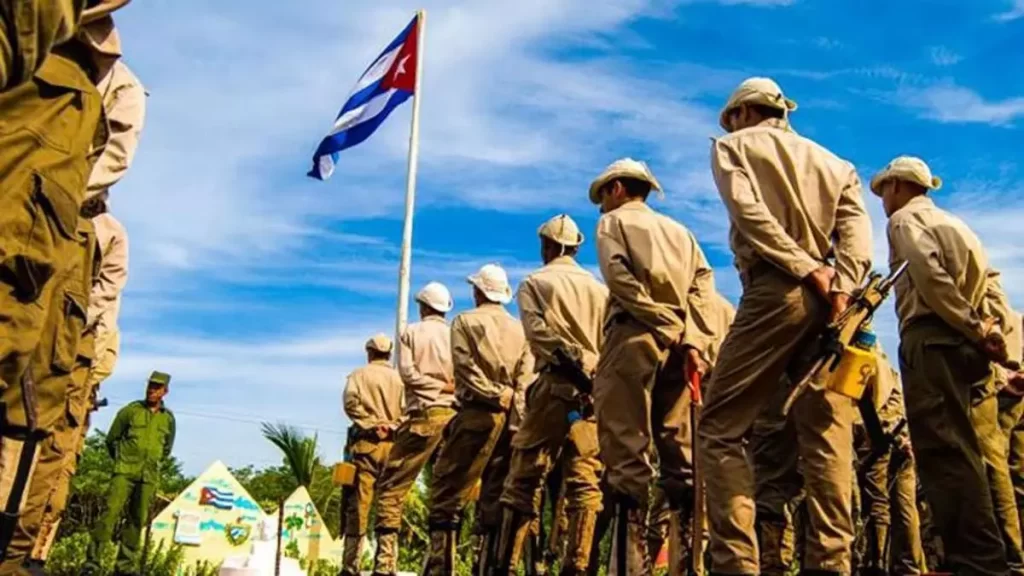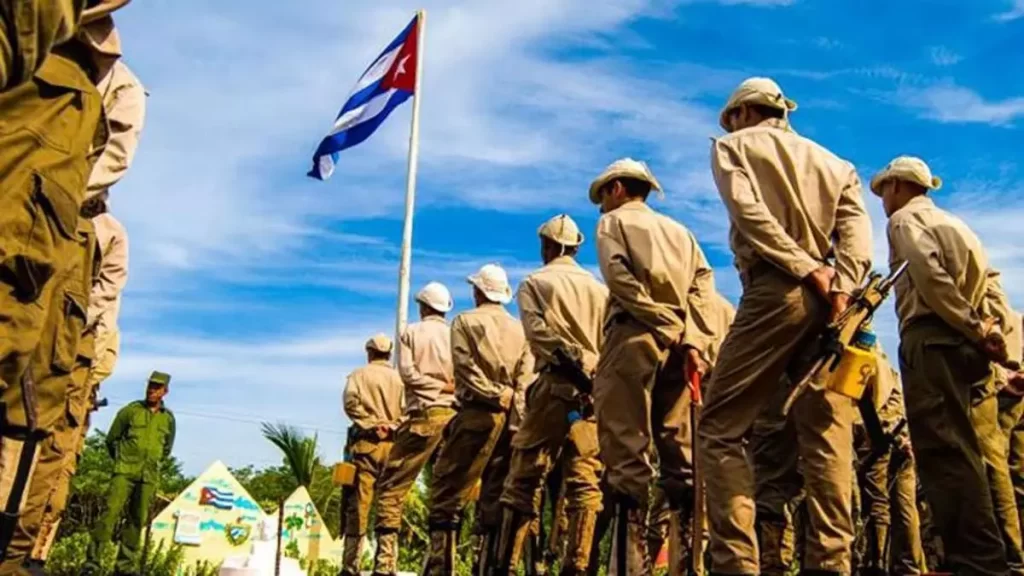The absence of young people in the activities of Cuba’s Youth Labor Army, EJT, is noticeable

14ymedio, Natalia López Moya, Havana, 31 July 2024 — A bunk bed with a thin mattress, boots that he had to return when he was demobilized and a uniform that was not olive green were, for months, the main belongings of Abdiel, 20, who has just finished his Active Military Service (SMA) in the Youth Labor Army (EJT). In the shelters where it was previously difficult to find space, the young man barely came across “four cats” due to the mass exodus and low birth rate.
Abdiel, whose name has been changed to avoid reprisals, is part of the group of recruits who did “deferred” service, a total of 14 months from when he entered the EJT until he left to study a specialty at La Colina University in the Cuban capital. “I was lucky because although I didn’t get the degree I wanted, I was able to get one that allowed me not to have to spend the two years of Military Service,” he explains to 14ymedio.
A resident of the Plaza de la Revolución municipality and coming from a family of Jehovah’s Witnesses who do not even participate in the Committees for the Defense of the Revolution, Abdiel ended up on the list of those who are not trustworthy for entering military units where they are in contact with “strategic information for the nation,” as he was warned by the Military Committee when he registered for the SMA. He was placed in an EJT base in East Havana.
Abdiel ended up on the list of those who cannot be trusted to enter military units where they are in contact with “strategic information for the nation”
“I thought they were going to send me to fight the Aedes Aegypti [the mosquito that transmits dengue] or to repair the railway lines, but all I did was waste my time,” Abdiel reflects. Founded in 1973, the EJT was nourished by the Centennial Youth Column and the infamous Military Units for Production Support (Umap), where everyone from religious people and homosexuals to those considered “disaffected” to the Government ended up. From its beginnings, the Youth Labour Army was assigned to work in agriculture and construction.
Fernando Ponce, 56, a resident of Miami, remembers his time in the EJT. “It was a way of doing the service in a less difficult way, so many parents used their influence to get their children to end up in the EJT. There were also those who invented an illness, a religious faith or said they were gay so they wouldn’t have to end up in hard military training, in one of those units lost in the middle of nowhere.”
Ponce went through the EJT and now his son has just left Cuba thanks to the family reunification process, escaping just before entering the SMA. “Last year we had many hard times because he was due to enter the pre-Service in August 2023, but last year when he finished high school, he and his mother, who still lives in Havana, moved and that turned things around.”
When young people turn 16 in Cuba, they are called to enroll in the SMA, which often coincides with the end of pre-university or vocational training, in the case of those who are still enrolled in the official educational plan. Ponce’s son was finishing his 12th


